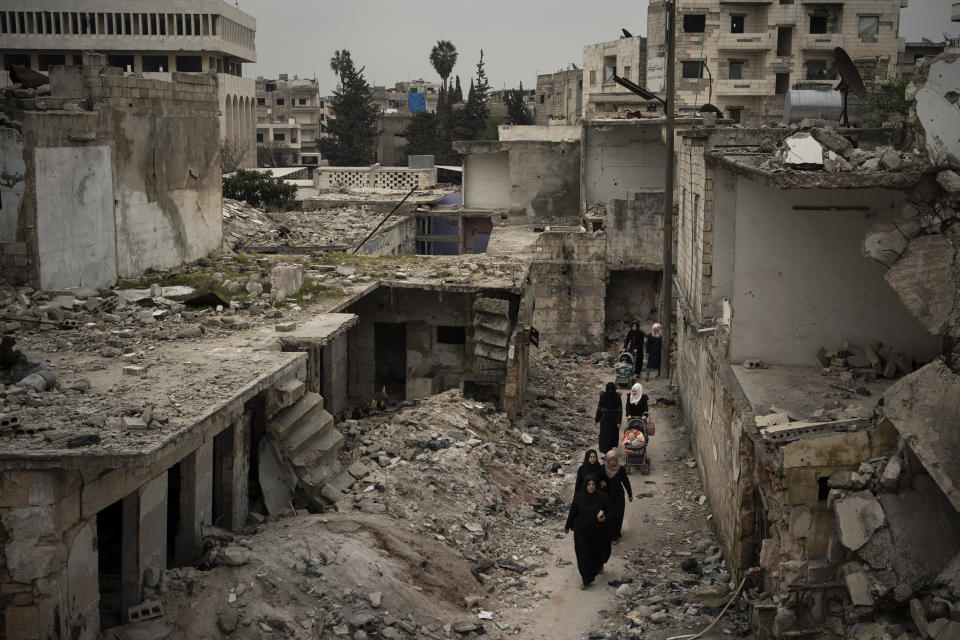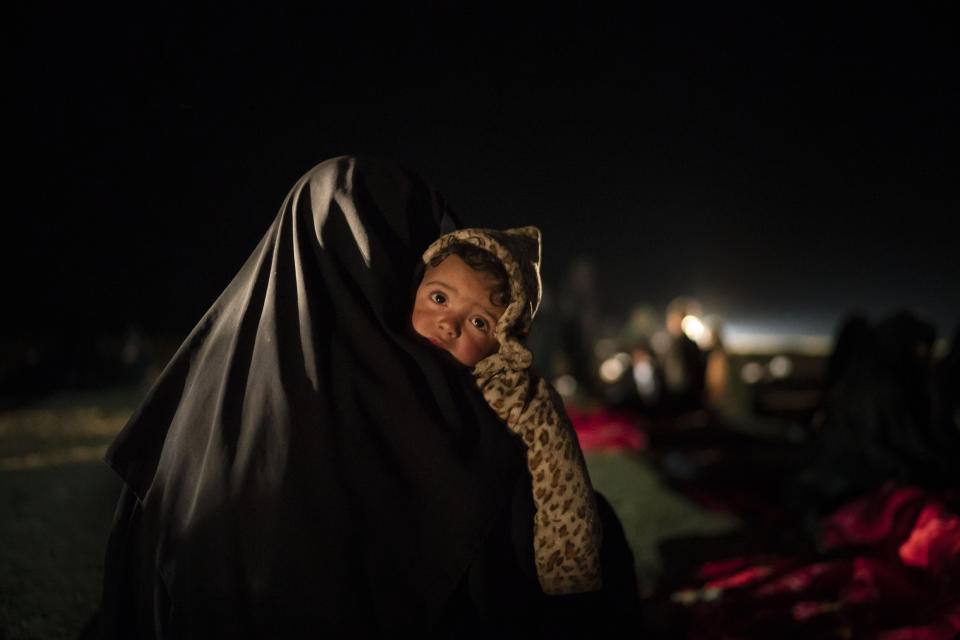Aid group: Syrians could be displaced for years to come
BEIRUT (AP) — Hundreds of thousands of Syrians face continued displacement each coming year that the conflict continues and economic conditions deteriorate, the Norwegian Refugee Council said Monday.
Economic deterioration and hardship are increasingly driving Syrians out of their homes, but the number of displaced will be higher if large military operations resume, according to a report by the humanitarian group.
The Syrian conflict, which marks 10 years later this month, has resulted in the largest displacement crisis since World War II, with an estimated 2.4 million people displaced in and outside Syria every year since the war begin in 2011, the council said.
Secretary General of the Norwegian Refugee Council Jan Egeland called it a “decade of shame for humanity."
The conflict has left Syria divided and in ruins. Nearly half a million people have been killed, a million children born in exile, and the fate of tens of thousands of people imprisoned or forcibly disappeared remains unknown.
Of the country’s 23 million pre-war population, nearly 5.6 million are refugees living in neighboring countries and Europe. Some 6.5 million are displaced within the country, most of them for over five years.
In 2020, 1.8 million were newly displaced, according to the humanitarian organization, even though fighting subsided after the Syrian government restored control over most territories in military operations. In the same year, for every person that returned home, nearly four were newly displaced.
At least 60% of those newly displaced in January were forced to leave home because of deteriorating economic conditions and lack of services, the council said.
To reverse the stalemate in the conflict, the council called for a nationwide cease-fire and a political settlement.
It predicted the Syria crisis could see at least 6 million more displacements over the next decade if the conflict and economic deterioration continue at the same rate. It said there are little prospects for refugees and displaced people to return home with the lack of security and a political settlement.
Years of U.N.-sponsored peace talks have led nowhere. Presidential elections expected this spring feature a single candidate — President Bashar Assad, whose government and military forces oversaw the conflict.
Meanwhile, 23 million people, including 13.4 million Syrians and members of refugee-hosting countries are in need of humanitarian assistance, the largest number in the region to date, said Samah Hadid, head of advocacy and media at the Norwegian Refugee Council.
The coronavirus pandemic has only exacerbated needs and put strains on international assistance that has so far largely failed to keep up with the deepening crisis.
Major donors to Syria's humanitarian programs, such as the United Kingdom, already plan to cut as much as 67% of their funding for the war-torn country, according to leaked documents last month.
“This is huge,” Hadid said. “The cuts just further indicate the world abandoned Syrians at a time when needs and suffering are growing across the country."
Hadid said there is a need to consider more sustainable aid for Syrians, many of whom need help finding jobs. Some are returning to displacement camps because of lack of services or security.
“They are facing poverty, which is rising and they can't flee for safety," she said. “So they are completely stuck and they are going to be displaced for many years to come."

 Yahoo Finance
Yahoo Finance 

